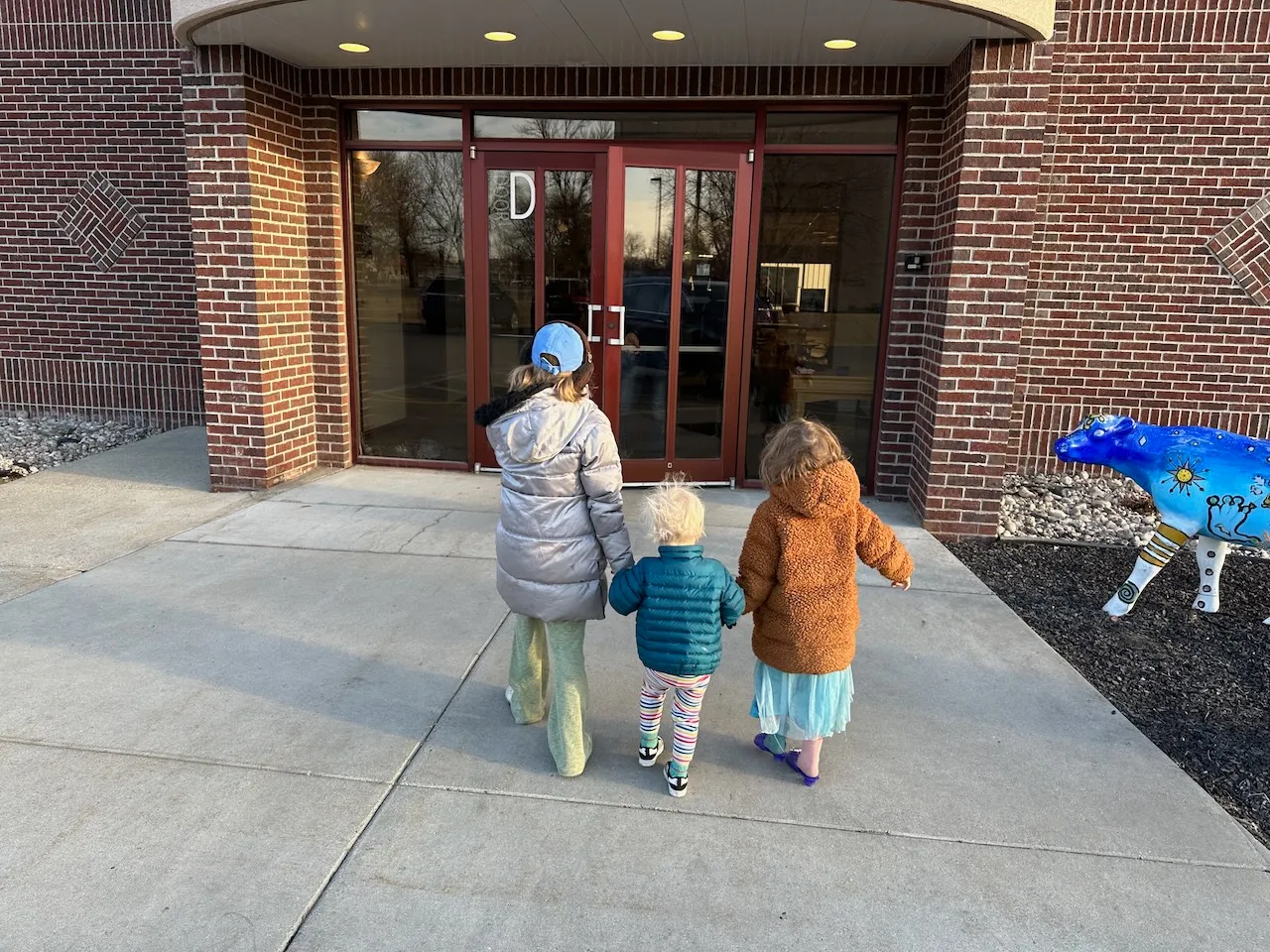The Disappearing NFT - Unlocking Opportunities with Progressive Credentials
Progressive credentials will incentivize learning and unlock experiences. Credentials that appear and disappear with your knowledge can expand what is possible with a credential.

Table of Contents
Digital credentials can incentivize learning and unlock experiences, as long as you use them before they disappear.
Non-fungible tokens (NFTs) and verifiable credentials (VCs) are increasingly used as digital credentials. Both can be used as progressive credentials, reflecting specific types of knowledge and skills at specific times. Both can also take advantage of a seldom used feature: decay.
The disappearing credential expands the use cases for digital credentials. With the option for these credentials to progress through learning, and then decay and eventually disappear, they could be used for continuing education, professional licensure, and to incentivize students to continually update their skills.
Digital credentials will enable us to unlock new experiences and opportunities. Making these credentials disappear will encourage upskilling and expand what is possible with a credential.
NFTs and VCs
There is currently a debate on how to best offer digital credentials. NFTs and verifiable credentials are the leading candidates.
NFT's generating cultural awareness and buzz. They are credentials with soul, easy to create, showcase, and share with existing tools. NFTs can be designed to be un-tradeable - called soulbound - so one’s credentials could not be bought and sold.
However, this permanence is also a downside. Students carry around their NFTs forever. Maybe we don’t want everyone to see that grade we received in organic chemistry.
Tokens can be also sent to a wallet without the user’s consent. If a new wallet is created, the soulbound NFT couldn't be transferred. There are also criticisms of the higher cost and privacy issues, especially in regards to Europe’s GDPR regulations.
Verifiable credentials offer an alternative that is flexible, but currently lacks the excitement of NFTs.
VCs are great at describing the abstract and evolving data about an individual. We change so maybe our credentials should too. VCs also enable a user to control what they share. With a VC, we can offer different versions of ourselves depending on who, or what, we are interacting with.
NFTs and VCs can interact with one another. VCs are able to link information to NFTs, which are tamper-proof and privacy preserving.
On a recent W3C call, Dominic Jones summed up the idealized version nicely, capture by Jay Scrambler:
NFTs represent what you own
— jmeks.eth 🦇🔊 (@JayScambler) April 12, 2022
Verifiable Credentials represent who you are
Digital credentials - both NFTs and VCs - are exciting because they open up new ways to represent ourselves in the metaverse. As Evin McMullen notes in the audio clip below, it’s more fun when we can introduce ourselves with more than our bank account.

Digital credentials, however, are underutilizing one key feature: progression.
The Progressions of Knowledge
Some learning is sequential: start with the introductory course, and build a foundation of knowledge. The student adds to that knowledge as they progress.
Other learning is singular: learn a specific task to have ready when needed. New tasks often emerge with technology or industry changes that force someone to upskill. These lessons were typically not a part of the original sequential learning path.
Both sequential and singular learning could be better documented with a progressive credential.
Progressive credentials enable learners to showcase their progress within a topic and tracks the length of time since they reviewed that knowledge or skill, ultimately disappearing if that knowledge is out-of-date.
Currently, progressive credentials are used in a variety of contexts:
- Licenses are a frequent use of progressive credentials. CPR certifications progress from Level A to Level C (and BLS for healthtcare workers). These certifications then expire within two years to force learners to refresh their knowledge.
- Professionals in many industries - law, accounting, medicine, etc. - are required to take continuing education to stay up-to-date on the latest research and best practices in their field. These hours are required to keep an active license.
- Even in activities we see progressive credentials. Girl Scouts earn badges as they undertake specific projects. Taekwondo students earn different color belts as they improve. While these don't expire, my driver's license does, and I have to retake my exam to main the license if it expires.
Digital credentials have the technical ability to work as continuing education credentials or professional certifications.
Building Progressive Digital Credentials
To explore what is possible with digital credentials, I interviewed builders in the Shiny Object Social Club. This DAO is home to developers and creators working on the edges of NFTs, smart contracts, and burning mechanisms. Mark Magnuson, co-founder of Bildr, and Paul Dysko, Blockchainpress.ca, dove into the specifics of what’s possible, particularly with NFTs, and what would help credentials reflect the fluid nature of education.
Measuring Progress
A key feature for both NFTs and VCs is the ability to have metadata, or evidence, in the credential.
Metadata, in NFT parlance, is basically a text box where credentials can add details - called “evidence” in the Verifiable Credential Data Model. This “JSON blob” enables anything that could be put into text to be added to the metadata.
More:
— Scottdavidmeyer.eth 🌻 (@MrScottMeyer) May 3, 2022
We are more than our transactions. Verifiable credentials allow us to assign blobs of JSON written by one party about another.
They give us web3 capabilities but can contain a full range of data not appropriate to share with the world. https://t.co/yOVISH2FDn
This metadata and evidence enables instructors to show the student’s work, for example. Instead of just a grade or the name of a degree, their portfolio would be visible.
As a student completes specific tasks, lessons or courses, the metadata could be updated. Just as Girl Scouts all start with a sash and then update it with badges, students would all receive an NFT that would update with their progress.
As an example, if the CPR student completes the lesson on administering an AED, the metadata would update from not complete to complete. When they finish the lesson on administering two-person CPR, that would also get added to the metadata.
Those details could be saved and updated on a typical web2 API server, so the changes don’t have to go back and forth to the blockchain, which gets expensive. As Evin says, the blockchain is a public good, we shouldn’t litter on it - (which is why she favors VCs.)

On a regular interval, or when requested by the educator, the updated metadata would push to the blockchain and the credential would update. It might change color, change text, or change shape. These credential traits are easy to sort and filter by students, teachers, and employers, just like we filter NFTs today.
What’s more, this data could initiate a minting and/or burning mechanism. Minting would mean an NFT is created for the student. Burning means the existing NFT is destroyed.
In this scenario, a student could receive a new credential - perhaps when they finish the course - and the previous credential could be destroyed. This would be the digital equivalent of the taekwondo student turning in their yellow belt when they receive their orange (or black!) belt.
Monitoring Decay
Certifications do not always last forever. Neither should digital credentials.
Verifiable credentials solve for this with an expiration feature. A date and time tracks when a credential is no longer valid. Educators can easily set the time frame for a credential, enabling potential employers (and more importantly, machines) to qualify or disqualify candidates based on the validity of their credential.
NFTs could make this process more visual with an automated burn. Based on a length of time, the NFT could literally disappear. Along the way, the NFT could even change. Imagine your CPR certification getting lighter and lighter until it is finally time to renew, (not unlike Michael J. Fox’s hand in Back to the Future.)

Expanding What’s Possible with Progressive Credentials
Digital credentials - both NFTs and VCs - provide new opportunities to incentivize, track, and celebrate learning of all types.
As the future of digital credentialing is built, NFTs and VCs can re-create traditional offline credentials. More interesting is to use the freedom of digital credentials to reimagine what credentials can do.
Your credentials could unlock personal experiences anywhere in the world, or in the metaverse. You might get access to an event, earn the opportunity to apply for a job, or connect with fellow alumni from The Airdropped University just with your digital credential, as Evin notes below.
Your data should introduce you and unlock personal experiences just like a token does today. https://t.co/iFDn2iMAQc
— Scottdavidmeyer.eth 🌻 (@MrScottMeyer) May 3, 2022
Progressive credentials are just the beginning. The future of opportunity await - our credentials could be the key.
Scott David Meyer Newsletter
Join the newsletter to receive the latest updates in your inbox.




